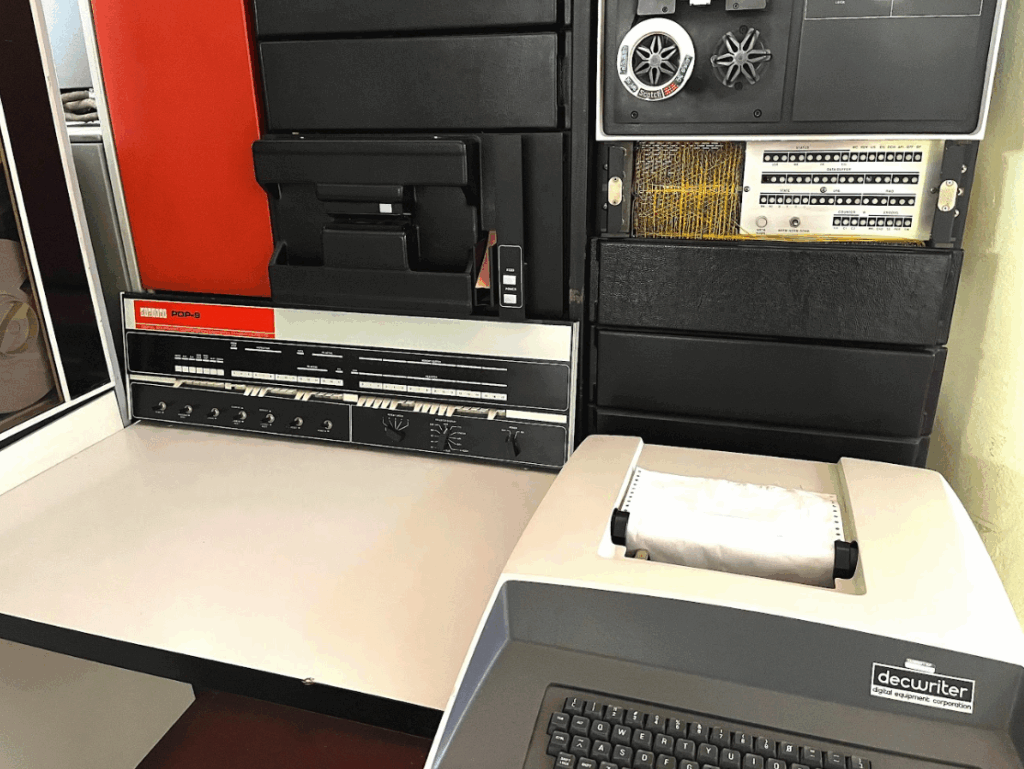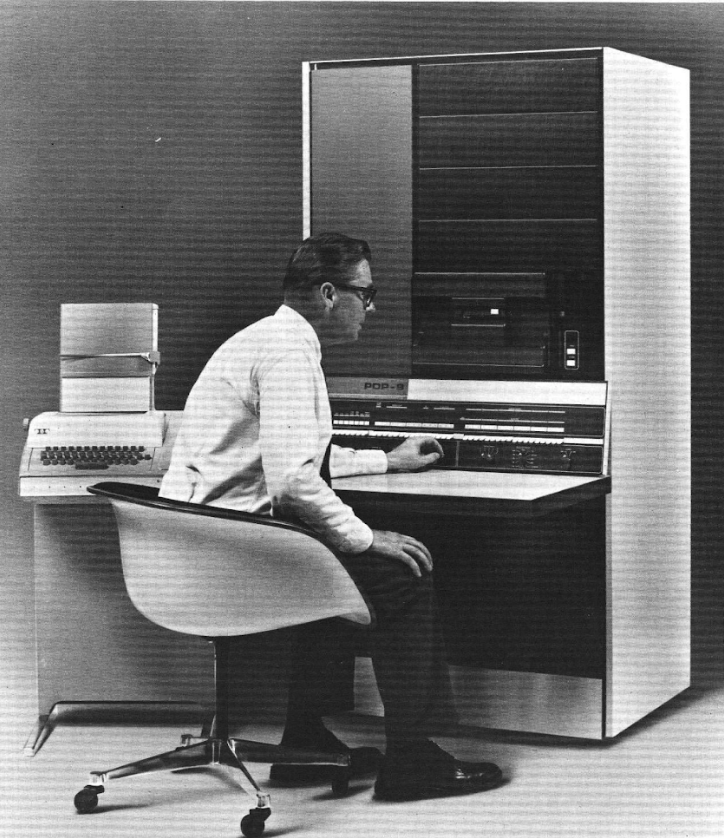DEC Flip-Chip tester | The MagPi #147
A brand new issue of The MagPi is out in the wild, and one of our favourite projects we read about involved rebuilding an old PDP-9 computer with a Raspberry Pi-based device that tests hundreds of components.
Anders Sandahl loves collecting old computers: “I really like to restore them and get them going again.” For this project, he wanted to build a kind of component tester for old DEC (Digital Equipment Corporation) Flip-Chip boards before he embarked on the lengthy task of restoring his 1966 PDP-9 computer — a two-foot-tall machine with six- to seven-hundred Flip-Chip boards inside — back to working order.

Image credit: Wikipedia
His Raspberry Pi-controlled DEC Flip-Chip tester checks the power output of these boards using relay modules and signal clips, giving accurate information about each one’s power draw and output. Once he’s confident each component is working properly, Anders can begin to assemble the historic DEC PDP-9 computer, which Wikipedia advises is one of only 445 ever produced.
Logical approach
“Flip-Chip boards from this era implement simple logical functions, comparable to one 7400-series logic circuit,” Anders explains. “The tester uses Raspberry Pi and an ADC (analogue-to-digital converter) to measure and control analogue signals sent to the Flip-Chip, and digital signals used to control the tester’s circuits. PDP-7, PDP-8 (both 8/S and Straight-8), PDP-9, and PDP-10 (with the original KA processor) all use this generation of Flip-Chips. A testing device for one will work for all of them, which is pretty useful if you’re in the business of restoring old computers.

Rhode Island Computer Museum (RICM) is where The MagPi publisher Brian Jepson and friend Mike Thompson both volunteer. Mike is part of a twelve-year-project to rebuild RICM’s own DEC PDP-9 and, after working on a different Flip-Chip tester there, he got in touch with Anders about his Raspberry Pi-based version. He’s now busily helping write the user manual for the tester unit.
Warning!
Frazzled Flip-Chips
Very old computers that use Flip-Chips have components operating at differing voltages, so there’s a high chance of shorting them. You need a level shifter to convert and step down voltages for safe operation.
Mike explains: “Testing early transistor-only Flip-Chips is incredibly complicated because the voltages are all negative, and the Flip-Chips must be tested with varying input voltages and different loads on the outputs.” There are no integrated circuits, just discrete transistors. Getting such an old computer running again is “quite a task” because of the sheer number of broken components on each PCB, and Flip-Chip boards hold lots of transistors and diodes, “all of which are subject to failure after 55+ years”.

Obstacles, of course
The Flip-Chip tester features 15 level-shifter boards. These step down the voltage so components with different power outputs and draws can operate alongside each other safely and without anything getting frazzled. Anders points out the disparity between the Flip-Chips’ 0 and -3V logic voltage levels and the +10 and -15V used as supply voltages. Huge efforts went into this level conversion to make it reliable and failsafe. Anders wrote the testing software himself, and built the hardware “from scratch” using parts from Mouser and custom-designed circuit boards. The project took around two years and cost around $500, of which the relays were a major part.

Anders favours Raspberry Pi because “it offers a complete OS, file system, and networking in a neat and well-packaged way”, and says it is “a very good software platform that you really just have to do minor tweaks on to get right”. He’s run the tester on Raspberry Pi 3B, 4, and 5. He says it should also run on Raspberry Pi Zero as well, “but having Ethernet and the extra CPU power makes life easier”.
Although this is a fairly niche project for committed computer restorers, Anders believes his Flip-Chip tester can be built by anyone who can solder fairly small SMD components. Documenting the project so others can build it was quite a task, so it was quite helpful when Mike got in touch and was able to assist with the write-up. As a fellow computer restorer, Mike says the tester means getting RICM’s PDP-9 working again “won’t be such an overwhelming task. With the tester we can test and repair each of the boards instead of trying to diagnose a very broken computer as a whole.”
The MagPi #147 out NOW!
You can grab the new issue right now from Tesco, Sainsbury’s, Asda, WHSmith, and other newsagents, including the Raspberry Pi Store in Cambridge. It’s also available at our online store, which ships around the world. You can also get it via our app on Android or iOS.

You can also subscribe to the print version of The MagPi. Not only do we deliver it globally, but people who sign up to the six- or twelve-month print subscription get a FREE Raspberry Pi Pico W!
The post DEC Flip-Chip tester | The MagPi #147 appeared first on Raspberry Pi.